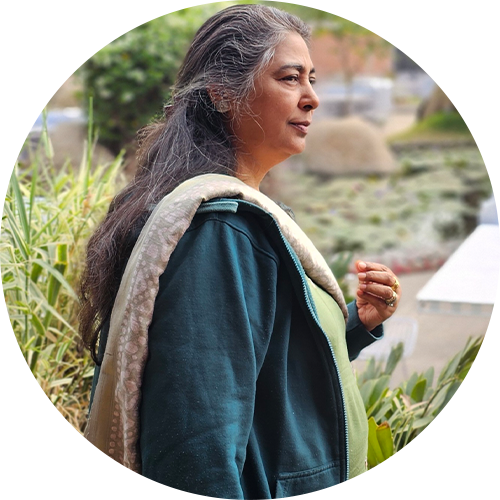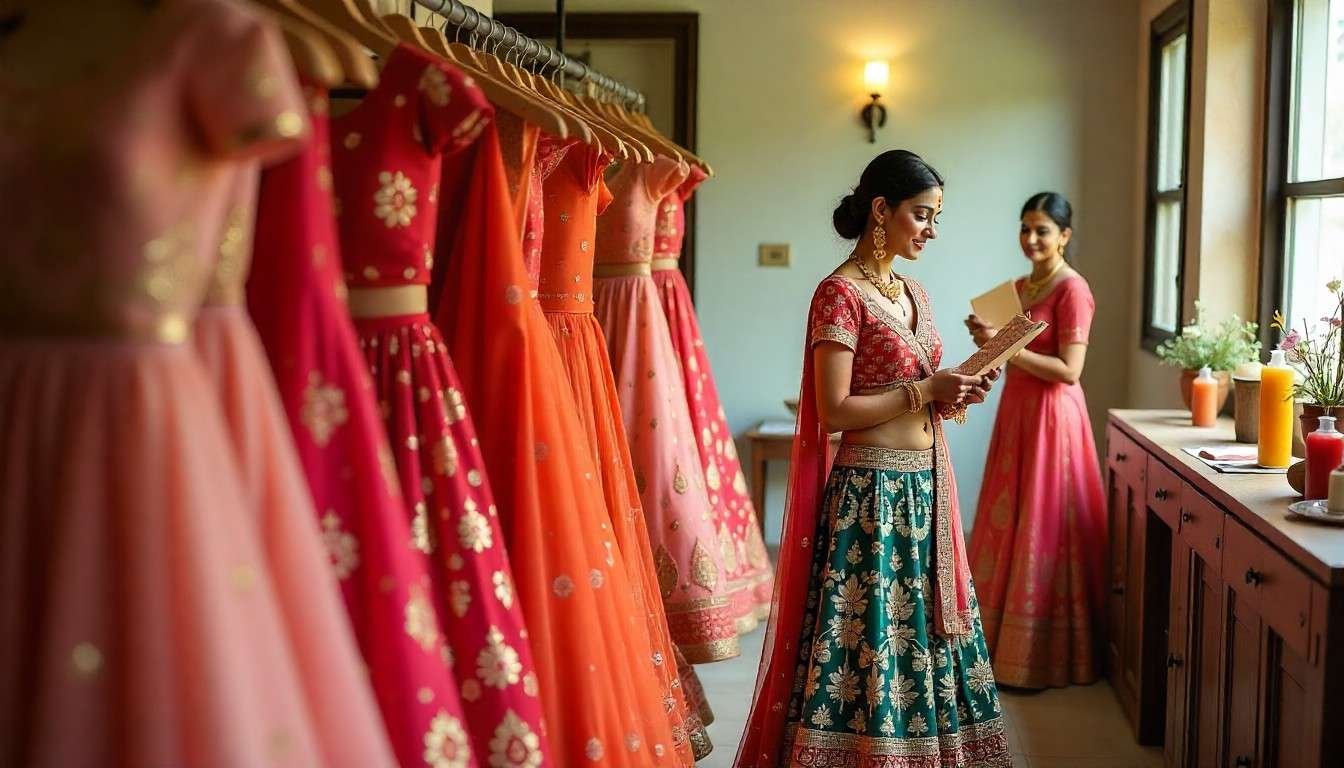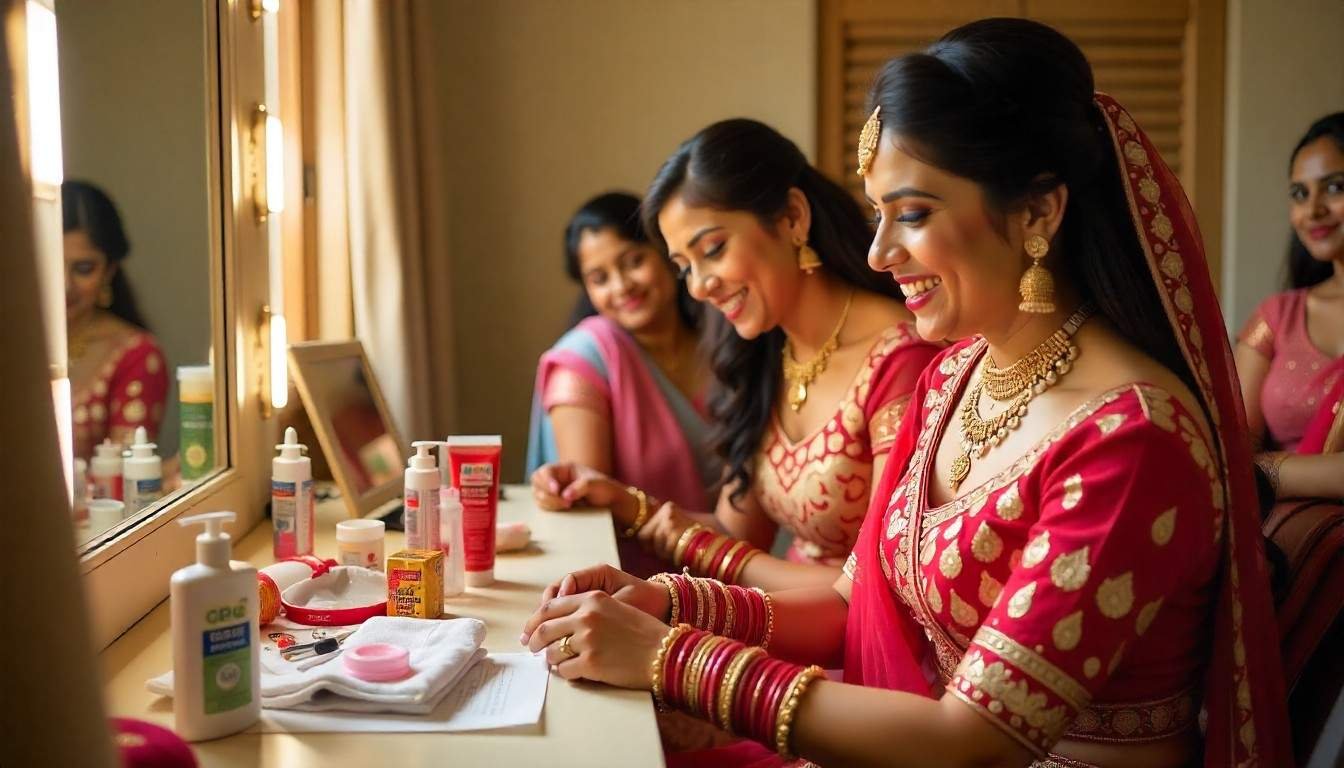Low-Waste, Handloom Options, and How to Brief Your Designer
If you want to make a positive impact and create a wedding outfit that truly matters, sustainable bridal choices are the future. In Ahmedabad, intelligent brides choose eco-friendly fabrics, ethical embroidery, and low-waste strategies—making their wedding look as meaningful as the memories attached.
Sustainable Bridal Fashion in 2025: Why It Matters
Today’s brides are shifting priorities. You care about the planet, support artisans, and build wardrobes that last. Sustainable fashion is booming in India. The boutique buyers now ask for “organic”, “handloom”, and “cruelty-free” at the start of every bridal planning meeting.
Mindful consumption is driving bridal fashion. You avoid excess. You invest in value. Social media celebrates eco-friendly celebrations, and your wedding can set an example.
Eco-Friendly Fabrics for Bridal Outfits
Top Choices for 2025
- Organic Silk: Produced without harmful chemicals, holds embroidery beautifully.
- Linen and Bamboo: Breathable, unique texture for Salwar Kameez and Indo Western.
- Handloom Cotton: Soft, drapes well, suited to summer weddings and Kurtis/Tops.
- Kanjivaram and Banarasi Handloom: Reputed for luxury, now available in organic blends.
Browse luxury and eco-friendly lehenga options here: Best Bridal Lehenga in Ahmedabad
Fabric Certifications
Look for GOTS, Silk Mark, and Craftmark. These certifications show your materials support low-impact farming and responsible production.
Ethical Embroidery & Handwork
Hand-Embroidery Traditions
- Zardozi and Resham: Handmade by skilled artisans using traditional methods.
- Phulkari, Kantha, Chikankari: Artisanal embroidery supporting Gujarat and North Indian heritage.
Supporting local crafts is key. Handwork lets you create custom pieces that last, gives jobs to rural artists, and brings uniqueness to every bridal lehenga or Chaniya Choli.
Understand motifs and technique with Chaniya Choli insights: Designer Chaniya Choli in Ahmedabad
Machine vs Hand
Machine work is fast but lacks the story and personal touch that hand embroidery offers. Hand embroidery means more work hours, fair pay, and signature artistry.
Low-Waste Bridal Outfit Strategies
Design Techniques for Less Waste
- Opt for modular outfits: Reusable blouses, multi-use dupattas, convertible lehenga panels.
- Choose timeless embroidery and neutral palettes that suit festivity and formality.
- Source leftover fabrics for stoles, pouches, and accessory add-ons.
- Upcycle family heirlooms; ask for a mix of new and old to honor traditions.
Rentals & Sharing Models
Boutiques in Ahmedabad offer rental and shared options for premium lehengas and Indo Western dresses—great for limiting your carbon footprint.
Find Indo Western inspiration for smarter styling: Indo Western Dresses For Every Occasion
How to Brief Your Designer for Sustainable Choices
- State Your Priorities: Eco-friendly, low-waste, and artisan-support.
- Ask for Certifications: Question the origin of all silk and cotton blends.
- Show References: Bring fabric samples or photos marked ‘organic’, ‘handloom’, or ‘GOTS certified’.
- Request for Transparency: Demand details about the craftspeople involved and the production process.
- Enquire About Waste: See if scraps and thread leftovers go into accessories or local recycling.
Most reputable boutiques—like Fashion Autograph—understand these requirements and work with suppliers that provide sustainable solutions.
What Works and What Doesn’t in Sustainable Bridal Fashion
Success Stories:
- Modular lehengas and upcycled blouses cut wedding costs by 30%.
- Brides using handloom Kanjivaram or Banarasi receive more compliments for comfort and heritage.
Common Mistakes:
- Relying on “greenwashed” marketing—demand paper trail and certifications.
- Giving unclear brief; always specify your values and review every sample.
- Skipping aftercare—organic materials require gentle cleaning and specific storage.
Financials & Numbers
- Cost Premium: Sustainable fabrics and handwork cost 15–40% more than standard bridal options.
- Savings: You save by reusing, upcycling, and sharing; plus, heirloom value is higher.
- Longevity: Hand-embroidered pieces last up to five times longer and can be worn for multiple occasions.
2025 Trends for Eco-Conscious Brides in Ahmedabad
Boutiques in Ahmedabad are launching bridal collections that feature Banarasi and Chanderi in natural blends, modular designer blouses, and regenerative agriculture-based cotton. Artisans from Kutch and Saurashtra create ethical embroidery pieces, giving each bride a signature look rooted in tradition—and modern values.
Get more inspiration from our work gallery: Fashion Autograph Work Gallery
Conclusion: Your Wedding, Your Values
You want every outfit to match your values—select honest fabrics, ethical handwork, and zero-waste design. You set the tone for your celebration, from the way you style your Bridal Lehenga to every accessory and Indo Western touch.
Start by booking your sustainable fashion consult at Fashion Autograph Ahmedabad; focus your brief, choose meaningful options, and make a difference with every stitch.
FAQs
What are the best eco-friendly fabrics for a bridal lehenga in 2025?
Organic silk and handloom cotton blends. Handwoven Banarasi and Kanjivaram are also top choices.
Are hand-embroidered lehengas more ethical than machine work?
Yes; they support local artisans, reduce carbon output, and create unique, heirloom-quality pieces.
How do I verify a designer’s sustainability credentials?
Check for GOTS, Silk Mark, and Craftmark certifications, and ask for artisan details.
Can sustainable fabrics feel luxurious and last long?
Absolutely. Modern organic silks and cottons combine heritage with durability.
How much should I budget for a sustainable bridal outfit?
Plan for 15–40% extra, but factor in savings from upcycling and longer wear.
Which local artisan crafts should I support in Ahmedabad?
Seek Kutchi and Saurashtra embroidery, Chikankari, and traditional handloom techniques.
Is rental or upcycled bridal wear socially accepted in India today?
Yes. Reusing and renting bridal outfits is increasingly popular and respected.
How can I create a zero-waste design brief?
Clearly state your priorities, demand sample material trail, and request options for upcycling and waste minimization.
For sustainable bridal ideas, expert consultations, and actionable plans, discover Fashion Autograph boutique in Ahmedabad—where every bridal choice celebrates style, tradition, and responsible living.





